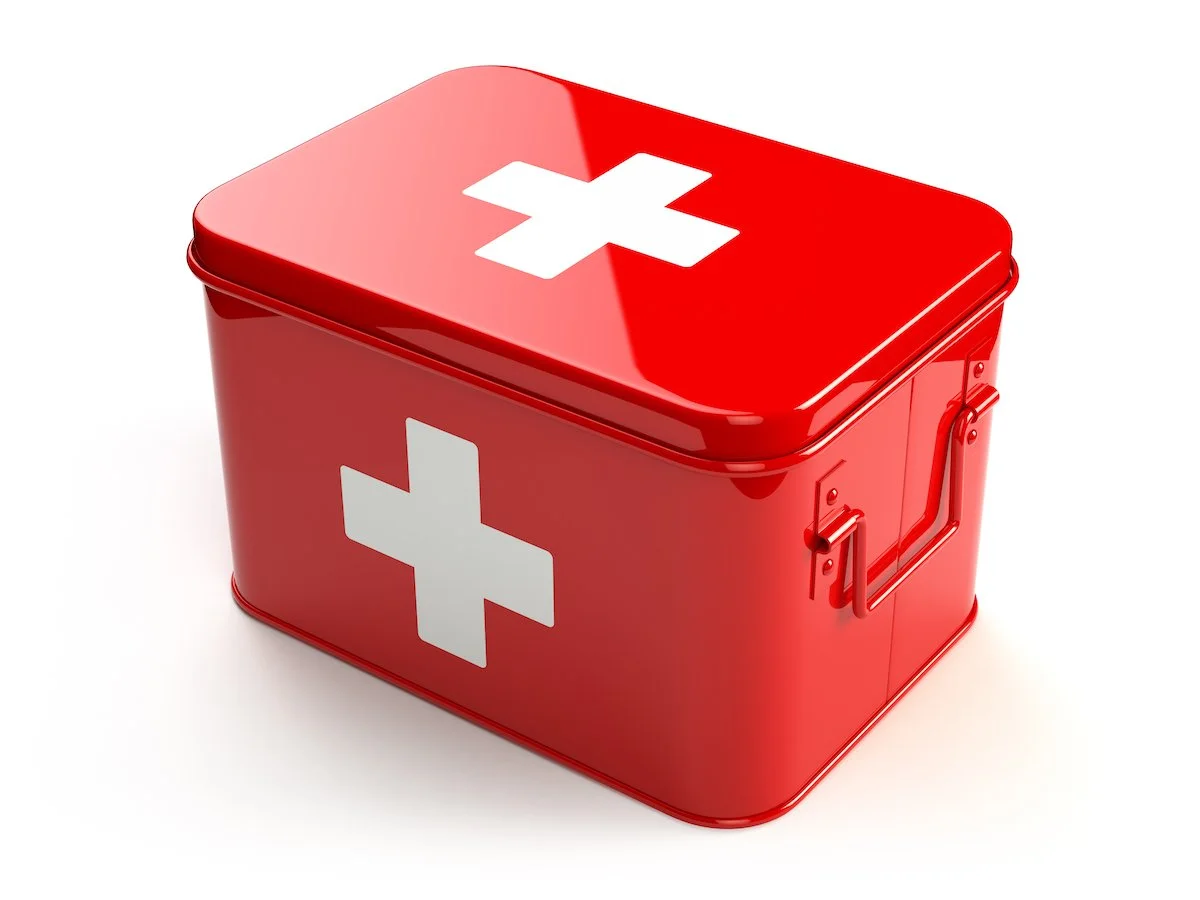First Aid - Anaphylactic Reaction
Languages: English
Media Editing: The video module(s) in this subject are editable under our Content Studio offering unless otherwise indicated. For more information about Content Studio, contact your CSM.
Description: The number of people who suffer from anaphylactic reactions, which are severe and sometimes deadly allergic reactions, has been steadily increasing over the years. An anaphylactic reaction is often a life-threatening situation which needs to be handled quickly and accurately in order to avoid tragic results. This subject focuses on teaching users what an anaphylactic reaction looks like and what to do if you know someone is experiencing one.
Languages: English
Media Editing: The video module(s) in this subject are editable under our Content Studio offering unless otherwise indicated. For more information about Content Studio, contact your CSM.
Description: The number of people who suffer from anaphylactic reactions, which are severe and sometimes deadly allergic reactions, has been steadily increasing over the years. An anaphylactic reaction is often a life-threatening situation which needs to be handled quickly and accurately in order to avoid tragic results. This subject focuses on teaching users what an anaphylactic reaction looks like and what to do if you know someone is experiencing one.
Languages: English
Media Editing: The video module(s) in this subject are editable under our Content Studio offering unless otherwise indicated. For more information about Content Studio, contact your CSM.
Description: The number of people who suffer from anaphylactic reactions, which are severe and sometimes deadly allergic reactions, has been steadily increasing over the years. An anaphylactic reaction is often a life-threatening situation which needs to be handled quickly and accurately in order to avoid tragic results. This subject focuses on teaching users what an anaphylactic reaction looks like and what to do if you know someone is experiencing one.
Topics
Signs and Symptoms of an Anaphylactic Reaction
-
In this topic, learners are given a high-level definition of what an anaphylactic reaction is as well as the four most common types of allergens known to cause anaphylactic shock. This content also provides an overview of some physical indications that a person is having an anaphylactic reaction to something, how the reaction affects their body, and how long symptoms can take to appear.
-
Questions (level 1, 2, 3)
-
This topic is currently available in English.
-
An anaphylactic reaction is the most severe allergic reaction a person can experience, and it affects at least two of the following: the respiratory, gastrointestinal, or cardiovascular systems, and skin.
The difference between an allergy and an anaphylactic reaction is allergies are not usually life-threatening, but anaphylaxis can be deadly.
The most common causes of anaphylactic allergies are foods, insects (bites), medication, and latex.
Signs and symptoms of anaphylactic shock can occur within moments of exposure to the allergen, but they usually occur within 60 minutes.
If someone is having an anaphylactic reaction, they may experience swelling, rashes/hives, redness, and itchiness on their skin – even inside their mouth (e.g. swollen tongue, itchy mouth).
When someone has an anaphylactic reaction, they could have trouble breathing, swallowing, and speaking.
If someone is having an anaphylactic reaction, they might get nausea or stomach pains, start vomiting, or have diarrhea.
Anaphylaxis often causes the victim’s blood pressure to drop; this could cause the victim to look pale, feel dizzy and weak, or even lose consciousness.
When someone has an anaphylactic reaction, they might feel like something is very wrong, which some describe as an ‘impending sense of doom.’
Preview of topic image for “Signs and Symptoms of an Anaphylactic Reaction” as this topic is questions only.
First Aid for Anaphylactic Reactions
-
The content in this topic teaches users how to help someone who is having an anaphylactic reaction. Specifically, learners are taught the steps and process they should follow if someone is having an anaphylactic reaction when to administer epinephrine, what to do with the auto-injector once it’s been used, and what they need to tell emergency medical services personnel. This topic includes a video to introduce key concepts.
-
Questions (level 1, 2, 3)
Video module
-
This topic is currently available in English.
-
Identify the proper procedure to follow when someone is having an anaphylactic reaction. Apply knowledge of first aid requirements for anaphylactic shock to scenarios in and out of the workplace.
If someone is having an anaphylactic reaction, give them epinephrine immediately to reverse the symptoms of the reaction. Epinephrine helps to open their airway and increase blood pressure.
The person having the anaphylactic reaction should administer the epinephrine auto-injector on themselves; you should only administer epinephrine for them if they are unable or uncomfortable doing so.
Epinephrine is more effective the earlier you give it to the victim. Epinephrine may be ineffective if symptoms are too far progressed, so it’s better to give it and not to have needed it than to give it too late.
If someone is having an anaphylactic reaction, call emergency medical services right away – even if they’ve already had a dose of epinephrine or their symptoms are going away. Anaphylactic reactions can still occur hours after exposure to the allergen, and hospitals will keep the victim under observation.
Before assisting the victim, introduce yourself, ask them if they’re having an anaphylactic reaction, and ask for consent to give them epinephrine.
Call emergency services immediately after giving the victim epinephrine; tell the emergency services operator when the reaction started, that you’ve given them the epinephrine, and the time it was given.
If the victim’s symptoms don’t start to resolve within 5-10 minutes after the first dose of epinephrine, call emergency medical services back and follow their directions; you may need to give them a second dose.
While waiting for emergency services to arrive, loosen any tight clothing on the victim, have them lay down on their back, and raise their feet above their heart. This can help raise their blood pressure.
If the victim is vomiting, feels nauseated, or is losing consciousness, lay them on their side, so they don’t choke on their vomit.
Note: victims who are fading from consciousness are very prone to vomiting, and they may not be able to indicate that it’s about to happen.
Keep the epinephrine auto-injector, so you can give it to the emergency medical services technician when they arrive and tell them what time the medication was injected.
How to Use an Epinephrine Auto-Injector
-
Once the anaphylactic reaction has started, it’s vital that the victim is treated as quickly as possible. Knowing how to safely and correctly use an epinephrine auto-injector can save the victim’s life. This topic focuses specifically on the steps and best practices to follow when using epinephrine auto-injectors, including details like the correct vs. incorrect ways to hold the auto-injector, where the epinephrine should be injected, how to prepare the injection site, and more. This topic includes a video to introduce key concepts.
-
Questions (level 1, 2, 3)
Video module
-
This topic is currently available in English.
-
Identify the steps required to correctly use an epinephrine auto-injector. Apply knowledge of epinephrine auto-injector use to relevant scenarios in and out of the workplace.
When administering the epinephrine auto-injector, remove any thick clothing if needed; the needle can penetrate up to one thin layer of clothing.
To use an epinephrine auto-injector, grip it firmly around the middle in a fist. Keep your thumb clear of the top so you don’t interfere with the medication delivery.
Once you’re holding the auto-injector properly, remove the protective safety cap (usually blue) from the top of the auto-injector.
Never touch the epinephrine auto-injector’s tip (usually orange or yellow) to avoid accidentally sticking yourself with the needle.
After removing the safety cap and properly gripping the auto-injector, firmly press the tip (usually orange or yellow) into the victim’s thigh, since it’s one of the largest muscles in the body and the medicine will spread more quickly.
Once the epinephrine auto-injector is in the victims’ thigh, listen for a ‘click’, and keep the needle in their thigh for three to five seconds to make sure all the medicine is injected.







